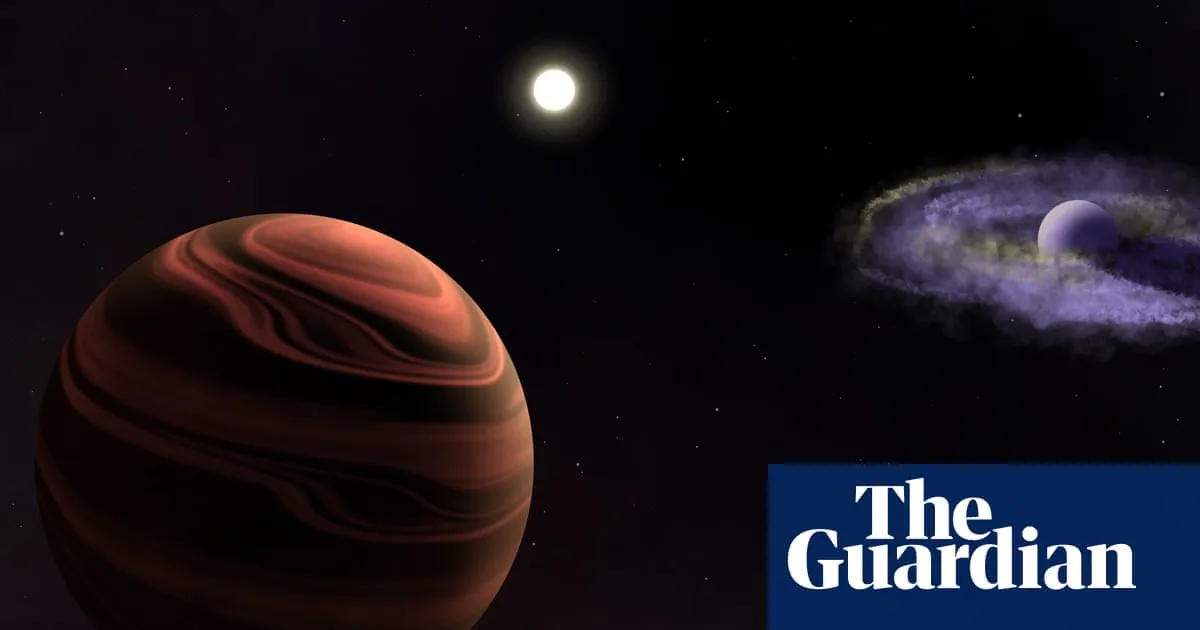
Should humans ever contemplate venturing to a specific planet that orbits a sun-like star in the constellation of the Fly, they would need to remain vigilant about the peculiar weather conditions. This intriguing planet is shrouded in thick clouds primarily composed of mineral dust, with astronomers speculating the presence of iron within these clouds, which could potentially rain down on the surface when they disperse. The James Webb Space Telescope (JWST) recently observed these high-altitude clouds while focusing on the young star system located 307 light-years away in the southern sky.
The star at the center of this fascinating system, known as YSES-1, is relatively young by cosmic standards, with an age of merely 1 million years compared to our sun's 4.6 billion years. This youthful star is accompanied by two gas giants, both in the process of formation and significantly larger than Jupiter, the largest planet in our solar system. Dr. Kielan Hoch, an astrophysicist at the Space Telescope Science Institute in Baltimore, Maryland, emphasized that the youth of the planetary system makes it an excellent target for astronomers eager to uncover insights into the early evolution of planets around distant stars.
“There’s a small handful of multiplanet systems that have been directly imaged,” Hoch noted. “These systems serve as a unique laboratory to test planet formation theories, as they formed in the same environment.” The planets remain bright enough for detection due to their ongoing formation, with the light observed originating from their gradual shrinkage and condensation.
During the observations, astronomers were pleasantly surprised to find both planets within the telescope's field of view, providing them with valuable data on two worlds simultaneously. The outer planet, YSES-1c, is the smaller of the two and possesses approximately six times the mass of Jupiter. JWST's findings unveiled high-altitude clouds in its atmosphere, which differ significantly from Earth's water vapor clouds; they are instead composed of magnesium silicate dust grains, with iron possibly present as well.
“The iron would indeed precipitate out,” Hoch explained. The observations represent the first direct detection of such clouds on a planet orbiting a sun-like star. Additional data also indicated a disk of material containing trillions of tonnes of dust particles surrounding the larger inner planet, YSES-1b, which has about 14 times the mass of Jupiter. These groundbreaking findings were published in the scientific journal, Nature.
Hoch described the disk surrounding YSES-1b as a “puzzle for formation theories,” particularly since both planets are believed to have formed under similar conditions. “Why did YSES-1b retain its surrounding material while YSES-1c did not?” she pondered. Another conundrum arises from the fact that YSES-1b, despite being 16 million years old, still possesses a swirling disk of material. Current theories of planet formation suggest that such encircling dust should have settled within the first 5 million years of a planet's life.
“We wouldn’t expect the planets to look so different from one another if they formed in the same protoplanetary disk,” Hoch concluded. The data provided by JWST is immensely valuable, allowing researchers to refine existing models and enhance our understanding of planet formation and evolution in distant star systems.